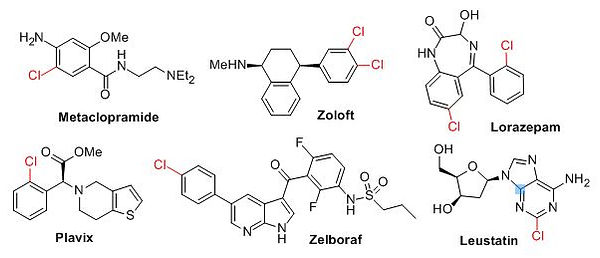
N-Centered Radical Project (C-N Bond Formation and Sulfonamide Insertion)
Nitrogen is a key atom found in nature, materials science, and synthetic pharmaceuticals. It is of great desire in the drug discovery community to install nitrogen functionality at late stages in the synthetic pathway to a bioactive core. In the Lamar Research Group, we aim to develop practical methods to accomplish this challenging goal by selectively inserting carbon-nitrogen bonds into relatively complex molecules. Our approach employs a mild, visible-light-promoted generation of nitrogen-centered radicals from readily available, inexpensive sources. The projects involved cover a range of disciplines and provide experience in the fields of catalysis, drug discovery, organometallic chemistry, organic synthesis, and medicinal chemistry.

Pharmacores of interest with regard to our C-N bond forming methodologies



LED reaction chambers Colorful chromatography Organic Dye Catalysis

Visible Light Photoredox Catalysis with Organic Dyes
Direct electrophilic halogenation at predictable locations represents an important transformation in the fine chemical synthesis of complex small molecules within the areas of pharmaceuticals, natural products, advanced materials, and agrochemicals. In the realm of drug discovery and development, halogen installation can assist in the modulation of electronic and physical properties resulting in halogenated end-products such as in the figure shown below. The introduction of halogen atoms can also serve to produce synthetic intermediates that contain a chemical handle for subsequent transformations such as cross-coupling reactions. Following our interest in nitrogen-centered radical (NCR) chemistry, we sought to investigate the utilization of visible-light photocatalysis (VLPC) as a viable alternative to using an external acid in order to amplify the electrophilicity of a variety of halogenating agents. Visible-light photocatalysis is a field that has received a great deal of attention as a means to induce single electron transfer (radical) reactions under mild and practical operating conditions. Our research focuses on the discovery of commercially available, inexpensive organic dyes for use as catalysts in halogenation reactions.

Molecularly Imprinted Polymers
We are developing new methods to control the properties of thin film polymers by using molecularly imprinted polymer technologies. Potential applications for polymeric materials with specifically designed cavity sizes include chemical sensing, encapsulation and slow release (drug delivery), solid electrolytes for batteries, selective removal of environmental contaminants, and biomimetic catalysis.


PEO/LiOTf film for lithium electrolyte battery SEM image of porous film surface
(John Ostrander - Teeters Research Group)
Art Conservation and Analysis
In collaboration with Dr. Pickering (in the Anthropology Department at TU) and the Gilcrease Museum, we are using Scanning Electron Microscopy (SEM) to determine methods to verify authenticity of Western Mexican ceramics.



Art Conservation and Analysis
In collaboration with Dr. Pickering (in the Anthropology Department at TU) and the Gilcrease Museum, we are using Scanning Electron Microscopy (SEM) to determine methods to verify authenticity of Western Mexican ceramics.



